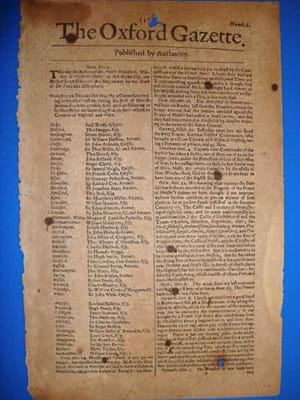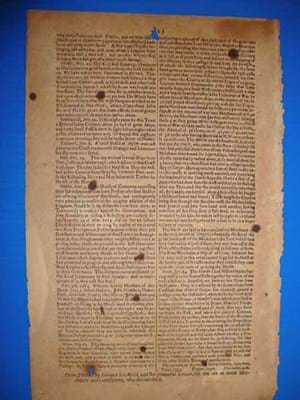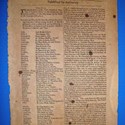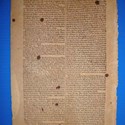A simple statement at the top of the front page of the Oxford Gazette Number 1 printed on November 7, 1665, announced that he had been "Elected Lord Bishop of this See".
In doing so, it became the first ever British newspaper report, contained in what is now accepted as the world's first recognised newspaper.
Only two or three examples are known to survive in private hands, and Mullock's (17% buyer's premium) are offering one in their November 5 sale in Ludlow, estimated at £12,000-15,000.
It was consigned from a UK private collector and the Shropshire saleroom's specialist Richard Westwood-Brookes expects strong interest from US bidders, "because in this country newspapers are not regarded in any way shape or form as importantly as the Americans regard them".
Indeed, the last time he could track down a copy of Oxford Gazette Number 1 being sold was a few years ago in the US, for $37,000, at an unknown saleroom, and his estimate on November 5 is partly based on this.
Print Run
The Gazette came to be in Oxford in 1665 because Charles II had moved the court to avoid the plague.
Few people could read at that time, printing costs were high and, as Mr Westwood-Brookes said: "People were very wary of receiving something which would have been distributed in the streets at the time of plague, so the Gazettes were posted to named recipients. The numbers sent would have been very small, I would think no more than about a hundred."
Despite two small holes and some spotting, the browned paper is fully legible.
Along with the Rev Blandford's starring role, the Gazette ran to two pages and included news ranging from appointment of sheriffs to the county and naval debates in the House of Commons to the question of impeachment for treason for seven MPs.
The plague is dealt with in a single chilling statistic at the end of the reports saying in that particular week 1050 people in London had died from it.
When the court eventually moved back to the capital the Gazette became the London Gazette and still functions today as the official organ of government in which official notices are published.
The following lot at Mullock's on November 5, consigned by the same collector, is another very notable copy of the Gazette - this time in the guise of the London Gazette Number 84, covering August 30-September 3, 1666, estimated at £5000-7000.
The date is all-important: this 2pp copy contains the first contemporaneous report of the Great Fire of London.
At the bottom of page 2 comes the ominous information: "London Sept 2 About two a clock this morning a sudden and lamentable fire broke out in the City beginning not far from Thames-Street near London Bridge…"








